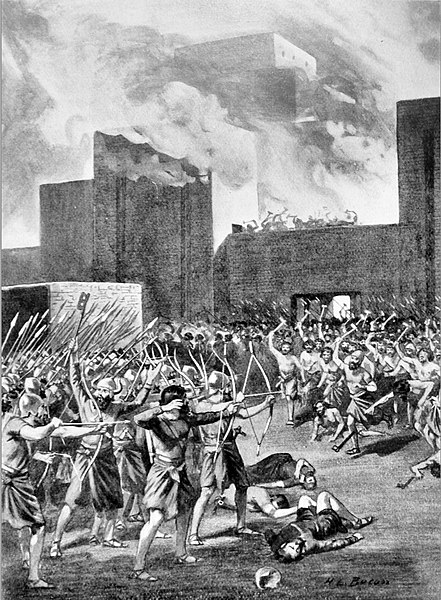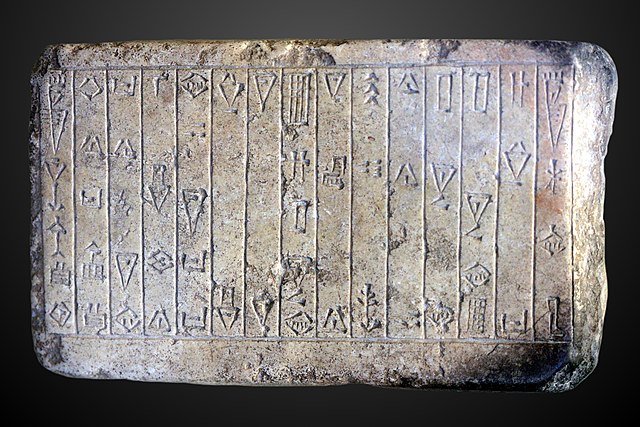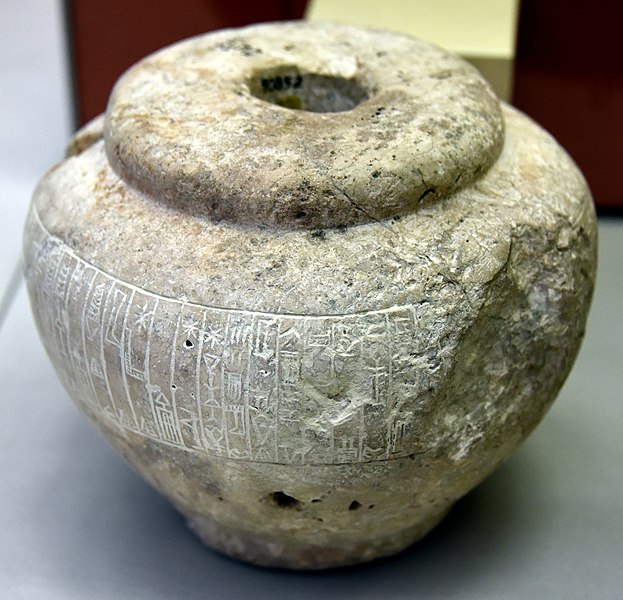
| GUTIAN DYNASTY OF SUMER Gutian Dynasty of Sumer : circa 2199 – 2119 BC (middle)
Capital : Akkad
Common languages : Gutian language and Sumerian language
Government : Monarchy
énsí :
• fl. c. 2135—2129 BC (Short) : Inkishush (first)
• fl. c. 2055—2055 BC (short) : Tirigan (last)
Historical era : Bronze Age
• Established : circa 2199
• Disestablished : 2119 BC (middle)
Preceded by : Akkadian Empire
Succeeded by : Third Dynasty of Ur
Today part of : Iraq
The Gutians attacking a Babylonian city, as Akkadians are making a stand outside their city. 19th century illustration The Gutian dynasty, also Kuti or Kutians (Sumerian: gu-ti-um) was a dynasty that came to power in Mesopotamia c. 2199 - 2119 BC (middle), or possibly c. 2135-2055 BC (short), after displacing the Akkadian Empire. It ruled for roughly one century; however, some copies of the Sumerian King List (SKL) vary between 4 and 25 years. The end of the Gutian dynasty is marked by the accession of Ur-Nammu (founder of the Third Dynasty of Ur, which fl. c. 2112 BC (middle) or 2055 BC (short)).
The Gutian people (Guti) were native to Gutium, presumably in the central Zagros Mountains.
History
:
The Gutians practiced hit-and-run tactics, and would be long gone by the time regular troops could arrive to deal with the situation. Their raids crippled the economy of Sumer. Travel became unsafe, as did work in the fields, resulting in famine.
The Sumerian king list indicates that king Ur-Utu of Uruk was defeated by the barbarian Guti, perhaps around 2150 BC. The Guti swept down, defeated the demoralized Akkadian army, took Akkad, and destroyed it around 2115 BC. However, they did not supplant all of Akkad, as several independent city-states remained alongside them, including Lagash, where a local dynasty still thrived and left numerous textual and archaeological remains. The first Guti ruler was a nameless king.[citation needed]
Gutium in inscriptions :
Tablet of Lugalanatum
Gutium An inscription dated c. 2130 BC, mentioning the Gutians: "Lugalanatum, prince of Umma ... built the E.GIDRU [Sceptre] Temple at Umma, buried his foundation deposit [and] regulated the orders. At that time, Siium was king of Gutium." The name gu-ti-um appears in the last column. Louvre Museum.
Ultimately Akkad was so thoroughly destroyed that its site is still not known. The Guti proved to be poor rulers. Under their crude rule, prosperity declined. They were too unaccustomed to the complexities of civilization to organize matters properly, particularly in connection with the canal network. This was allowed to sink into disrepair, with famine and death resulting. Thus, a short "dark age" swept over Mesopotamia.
Akkad bore the brunt of this as the center of the Empire, so that it was in Akkad that the Guti established their own center in place of the destroyed Akkad. Some of the Sumerian cities in the south took advantage of the distance and purchased a certain amount of self-government by paying tribute to the new rulers.
Uruk was thus able to develop a fifth dynasty. Even in the city of Akkad itself, a local dynasty was said to have ruled. The best known Sumerian ruler of the Gutian period was the ensi of Lagash, Gudea. Under him, c. 2075 BC (short), Lagash had a golden age, and seemed to enjoy a high level of independence from the Gutians.
After a few kings, the Gutian rulers became more cultured. Guti rule lasted only about a century — around 2050 BC, they were expelled from Mesopotamia by a coalition of rulers of Uruk and Ur, when Utu-hengal of Uruk defeated Gutian king Tirigan :
"By the envoys of Utu-hengal, Tirigan and his wife and children in Dabrum were captured. They placed fetters (a chain or manacle used to restrain a prisoner) on his hands and put a cloth (blindfold) over his eyes. Utuhegal before Utu made him lie at his (Utu’s) feet, and on his neck he set his foot. Gutium, the fanged snake of the mountain ranges, he made drink from the cracks in the earth."
-
Victory Stele of Utu-Hengal
Votive macehead of Gutian king La-erabum, circa 2150 BC, and its inscription "La-eraab, great King of Gutiim" (la-e-ra-ab da-num lugal gutiim). The name is quite damaged, and was initially read "Lasiraab". British Museum (BM 90852) Utu-hengal's victory revived the political and economic life of southern Sumer. The year 11 of king Ur-Nammu also mentions "Year Gutium was destroyed".
Weidner
Chronicle :
Naram-Sin destroyed the people of Babylon, so twice Marduk summoned the forces of Gutium against him. Marduk gave his kingship to the Gutian force. The Gutians were unhappy people unaware how to revere the gods, ignorant of the right cultic practices. Utu-hengal, the fisherman, caught a fish at the edge of the sea for an offering. That fish should not be offered to another god until it had been offered to Marduk, but the Gutians took the boiled fish from his hand before it was offered, so by his august command, Marduk removed the Gutian force from the rule of his land and gave it to Utu-hengal.
There are scholars who state that the description of the Gutian rule over parts of Mesopotamia was fiction or that it at least gave undue importance to the Guti horde. This is believed to be perpetuated by the chroniclers of Uruk to turn Utu-hegal's minor victory into an event of universal significance for the purpose of solidifying support for his emergent regime. This view is based on the varying accounts of the surviving manuscripts, with many of them in total disagreement as to the length of the king's reign and even the identities of the Guti kings.
List
of Gutian kings :
In the army of Gutium, at first no king was famous; they were their own kings and ruled thus for 3 years.
Gutian kings not on the SKL :
Gutian
kings on the SKL :
The listed reign lengths throughout much of the Gutian period are comparatively short and uniform :
Modern
connection theories: Kurds and Gutian dynasty :
In the abstract, Kurdish highland split up between today’s Iran and Iraq is considered as the original settlement area of Guteans. Some sources even mention Gutium and Kurdistan interchangeably. For instance: “Under Cyrus the Great of Persia Gobryas I is counted as governor of Kurdistan (Kutium)”.
According to Tamaz V. Gamkrelidze and Vyacheslav V. Ivanov, the Gutian language was close to the Tocharian languages of the Indo-European family.
Source :
https://en.wikipedia.org/wiki/ |


.jpg)


.jpg)